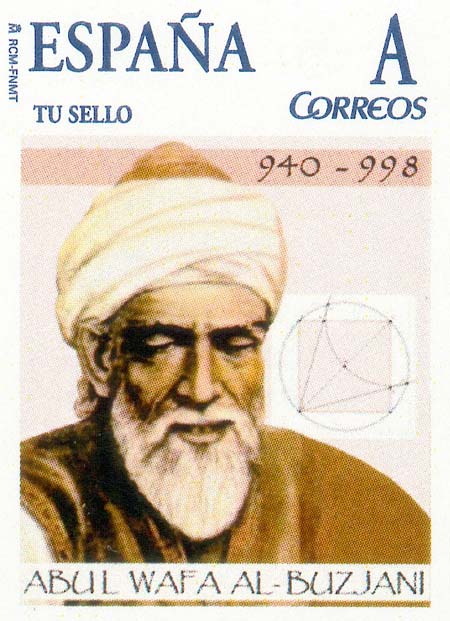Abu'l Wafa (AD 940–998)

Depiction of Abu'l Wafa on a Spanish stamp.
Abu'l Wafa (also known as Abu al-Wafa and Abu al-Wafa Buzhjani) was a Persian mathematician and astronomer. He was born in Buzjan, a city in what is now Iran.
Abu'l Wafa is considered one of the greatest mathematicians of the Islamic Golden Age, along with other scholars such as Al-Khwarizmi, Al-Biruni, and Omar Khayyam. He was the first to describe geometrical constructions possible only with a straightedge and a fixed compass, later dubbed a 'rusty compass,' that never alters its radius. He developed methods for constructing regular polygons and calculating the areas of circles and other figures.
He pioneered the use of the tangent function, apparently discovered the secant and cosecant functions, and compiled tables of sines and tangents at 15 arcminute intervals – work done as part of an investigation into the orbit of the Moon.
Abu'l Wafa wrote several important mathematical works, including treatisew on the calculation of areas and volumes, on the construction of regular polygons, and on the calculation of the movements of celestial bodies. He also wrote a treatise on the use of the astrolabe, a device used for measuring the altitude of celestial objects.
In addition to his work in mathematics and astronomy, Abul Wafa was also a skilled engineer and is known for his work on the construction of mechanical devices, such as water clocks and astronomical instruments.


